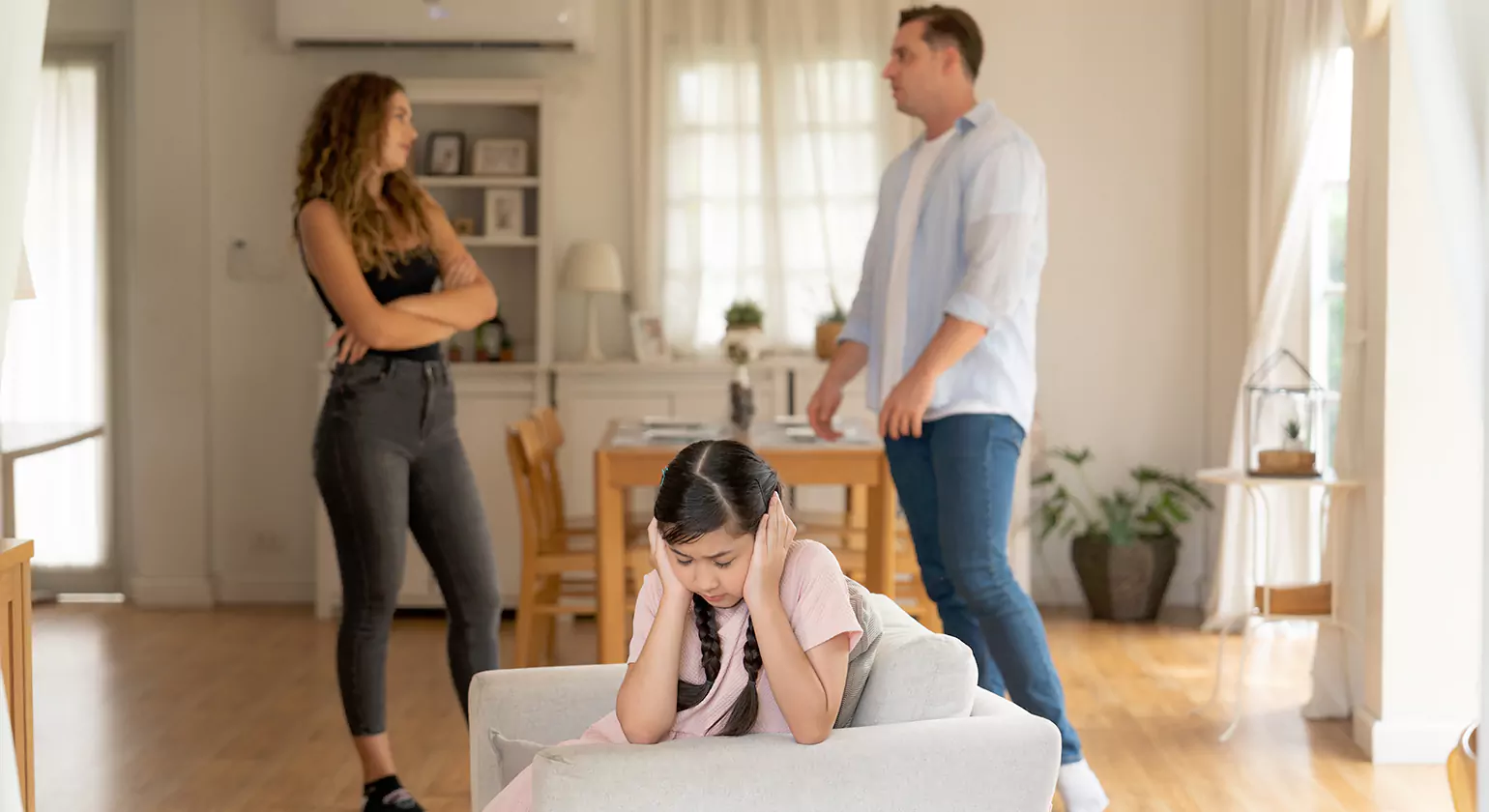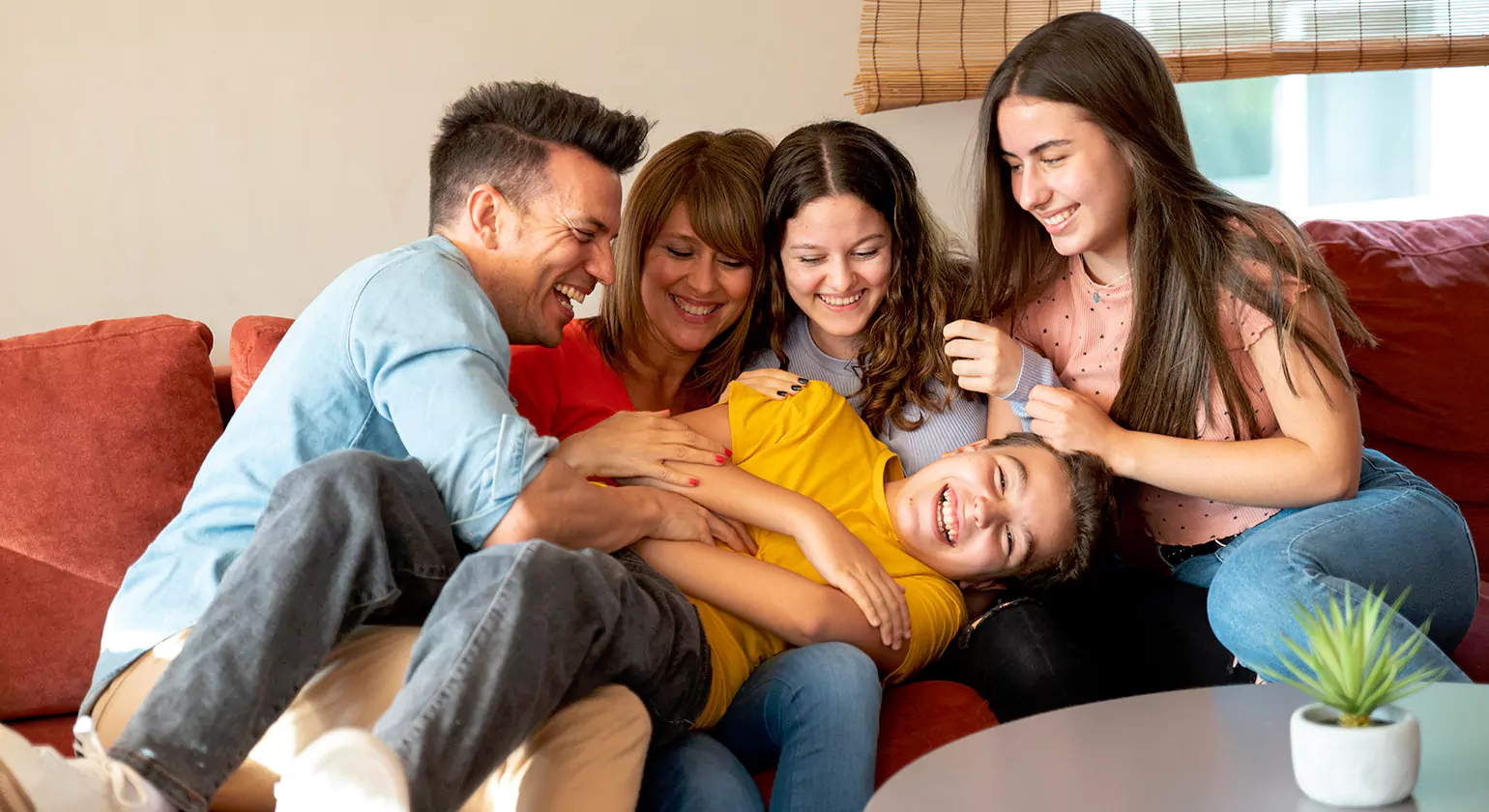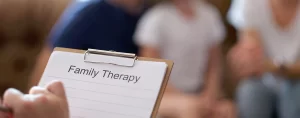Table of Contents
Introduction: Why Functional Family Therapy Matters
Functional family therapy is a brief, evidence-based approach that helps whole families tackle teen behavior problems before they spiral. In a nation where 42 percent of high schoolers report persistent sadness or hopelessness and one in five has seriously considered suicide (CDC Youth Risk Behavior Survey 2023), families often feel scared and stuck. School suspensions, arguments that end in slammed doors, or late-night calls from police can leave you wondering, “What do we do now?”
Functional family therapy (FFT) sits alongside better-known programs like multisystemic therapy, but it stands out for its concise 12-to-16-session model, its focus on each family’s unique strengths, and its strong research record. FFT turn tense family dinners into calm conversations and help teens stay in school instead of entering the juvenile-justice maze.
Root Causes & Family Dynamics Behind Behavioral Issues

Unpacking why teens act out is the first step toward real change. Behavior rarely stems from “bad kids” or “bad parents.” Instead, four overlapping forces commonly push families toward crisis:
Developmental turbulence in adolescence
- Rapid brain growth shifts teens toward thrill-seeking and emotional highs while the “brakes” (frontal-lobe judgment) are still wiring up.
- Sleep patterns change, hormones spike, and identity exploration can feel like open-heart surgery on the family system.
Social-environment stressors
- Academic pressure: Tests, college prep, and extracurricular overload can erode coping reserves.
- Peer influence: Belonging matters more than ever; a single risky friend group can tip the scales toward vaping or shoplifting.
- Digital life: Constant social-media comparison fuels anxiety and impulsive online challenges. The CDC reports that 29 percent of teens spend more than eight hours per day on screens, a pattern linked to depressive symptoms.
Communication breakdowns & negative interaction cycles
- When stress is high, families slip into pursue-withdraw or sarcasm-defensiveness loops.
- Small misunderstandings—“Where were you?” “Why do you care?”—snowball into shouting matches.
Over time, everyone starts predicting conflict, so even neutral statements trigger fight-or-flight reactions.
Mental-health comorbidities & genetic factors
- Roughly one in five U.S. adolescents meets criteria for a diagnosable anxiety or mood disorder (SAMHSA 2024).
- Conditions like ADHD, depression, or substance use run in families; genes set a baseline, while environment decides if and when problems surface.
- Untreated mental-health issues can distort family roles—siblings become mini-parents, or caregivers swing between overprotection and burnout.
Functional family therapy addresses these root causes by strengthening communication, reframing blame, and equipping every family member with practical skills. Instead of targeting the teen alone, FFT views misbehavior as a symptom of a strained family ecosystem, and that shift opens the door to lasting change.
How Functional Family Therapy Works

Functional family therapy (FFT) rests on a simple, hope-filled idea: when a family understands why a teen’s behavior “works” in their system and learns new ways to relate, lasting change follows. Below is a plain-English tour of the nuts and bolts.
Core Principles of FFT
- Strength-based – therapists look for existing positives (humor, loyalty, family traditions) and build from there.
- Culturally responsive – sessions honor race, faith, neighborhood norms, and chosen family structures.
- Goal-focused – every meeting links back to clear, mutually agreed-upon targets such as “zero unexcused absences this month.”
- Systemic lens – problems (and solutions) live in relationships, not in one “identified patient.”
The Three FFT Phases
- Engagement & Motivation – the therapist earns trust, reduces blame, and reframes the problem as “us vs. it,” not “parents vs. teen.”
- Behavior Change Techniques – families practice concrete skills (e.g., listening loops, cool-down cues, negotiated consequences).
- Generalization for Long-Term Success – new patterns are stress-tested in real-life settings (school, work, extended family) so gains stick.
Therapist’s Role & Typical Session Format
- Setting: Most work happens in your living room or kitchen table; clinics and telehealth are backups for privacy or weather.
- Participants: At least one caregiver and the teen attend every core session; siblings often join for brief skill drills.
- Rhythm: Sessions start with a check-in win (“What went a bit better this week?”) before tackling sticky topics.
- Tools: Whiteboards for mapping conflict cycles, role-plays for apology scripts, and short take-home “experiments” to try between visits.
- Safety net: Therapists are on call between meetings for texting quick coaching if a blow-up feels imminent.
Timeline, Cost, and Insurance Basics
- Duration: Most families complete 12–16 weekly sessions over three to five months, with flexibility for crises or vacations.
- Cost: Private-pay rates typically run $50–$250 per session, depending on region and clinician credentials.
- Coverage tips: FFT bills under standard family-therapy CPT codes; ask your insurer about 90847 (family psychotherapy with patient) and 90846 (without patient). Many Medicaid plans cover FFT when it diverts out-of-home placement.
- Sliding scales & grants: County juvenile-justice funds or nonprofit vouchers often offset fees for court-involved youth—ask providers up front.
Evidence-Based Benefits & Outcomes

FFT isn’t just “nice in theory.” Dozens of randomized and real-world studies show measurable payoffs for teens, parents, and communities.
Teen-Specific Outcomes
- Lower recidivism: Meta-analysis of 14 RCTs found a moderate drop in re-offending 6–12 months after treatment compared with usual services.
- Substance-use reduction: Court-involved youth in Philadelphia RCT logged significantly fewer new drug charges 18 months post-FFT versus a comparison group.
- School engagement: Studies note improved attendance and fewer suspensions once home conflict eases.
Family-Level Gains
- Communication & conflict resolution: Parents report shorter arguments, clearer rules, and more positive statements per interaction after FFT.
- Parental stress relief: Caregivers often see drops in anxiety and feelings of helplessness, freeing up energy for consistent parenting.
- Sibling spill-over: Younger brothers and sisters pick up the same listening and problem-solving skills, reducing future risk.
Key Research & Success Rates
Metric | Typical Improvement | Source & Notes |
Juvenile re-arrest | 20–35 % reduction | Multiple U.S. RCTs, incl. Gottfredson 2018 |
Substance-related charges | ~30 % fewer | Same Philadelphia RCT |
Family functioning scores | Moderate-to-large effect | 2023 systematic review of 20 studies (12,000 families) |
Program completion | 80–90 % with high therapist fidelity | Nationwide implementation data |
Why results vary: Outcomes are strongest when therapists stick closely to the model and agencies coordinate with schools or probation. Families who complete all three phases tend to maintain gains at the 18- to 24-month mark.
Self-Care & At-Home Strategies

Even the finest functional family therapy plan works best when you practice new skills between sessions. Below are three therapist-approved toolkits you can start tonight.
Everyday Communication Tools
- Two-Minute Turn Rule –
Set a timer and let each person speak for two full minutes while the rest listen without interrupting. Then swap. This simple structure lowers the volume and raises understanding. - Phone-Free Check-In –
Pick a 15-minute window (for example, right after dinner) when everyone parks devices in another room. Research shows that intentional, not total, tech limits foster stronger bonds and calmer moods. - Feel-Word Bank –
Print a list of feelings (excited, nervous, embarrassed) and leave it on the fridge. Teens often reach for anger because it’s familiar; a bigger vocabulary helps them share what’s really going on.
Positive Reinforcement & Consistent Boundaries
- Catch-It-Quick Praise –
Aim to notice a positive behavior (starting homework on time, forgiving a sibling) within 10 seconds and name it aloud. Timely praise beats grand rewards in changing habits. - Family Contract –
Write one or two non-negotiables—e.g., “no vaping in the house”—plus matching rewards (extra driving time) and consequences (loss of car keys). Post it where everyone can see it. - Boundary Scripts –
Use calm, predictable language: “I care about you, and the rule still stands.” Repeating the same phrase reduces debate cycles and models emotional regulation.
Stress-Management & Mindfulness for Families
- 90-Second Reset –
When tempers flare, everyone pauses, feels their feet on the floor, and takes five slow breaths. The body’s stress wave peaks and passes in roughly 90 seconds if you let it. - Shared Mindfulness Apps –
Try a free guided meditation before bed. Parents who practice alongside teens normalize self-care instead of prescribing it. - Green-Time Swap –
For every hour of screen use, plan 10 minutes outdoors—shooting hoops, walking the dog, or just cloud-spotting. The American Psychological Association notes that routine stress-relief habits protect teens’ mental health over time.
Daily practice of these small habits amplifies the gains you make in formal functional family therapy sessions and teaches teens a vital lesson: change is something the whole family does, not just something the therapist talks about.
Professional Treatment Options

While at-home work is powerful, many families need structured, expert guidance to break entrenched patterns. Here’s how to navigate the professional side of functional family therapy with confidence.
Finding a Qualified FFT Provider
- Check Credentials – Look for LMFT, LCSW, LPCC, or psychologist licensure plus formal FFT certification.
- Ask About Fidelity Monitoring – Reputable programs use session recordings, supervisor reviews, and family feedback to ensure the model is delivered as designed.
- Gauge Cultural Fit – Share your family’s background, values, and preferred language. Good FFT therapists adapt examples and metaphors to honor each culture.
- Confirm Availability – Because FFT is intensive, choose a provider who offers flexible scheduling and crisis check-ins between visits.
What to Expect in Each Session
- Warm-Up – A brief win-check to spotlight progress (“We had one calm school-morning this week”).
- Skill Drill – Role-playing a tough scenario, such as curfew negotiations, with real-time coaching.
- Homework Planning – Families co-design a short home experiment (e.g., using the Two-Minute Turn during disagreements) and set a clear follow-up measure.
- Progress Tracking – Therapists chart key metrics like school attendance or argument length to visualize change over weeks.
Sessions often happen in your living room; if privacy or distance is an issue, secure video visits are a solid alternative. Most families find that functional family therapy feels more like guided practice than talk-only counseling.
Payment Solutions & Community Resources
- Insurance Coverage – Ask your plan about CPT codes 90846 (family therapy without the patient) and 90847 (with patient). Many commercial and Medicaid policies reimburse FFT when billed under these codes.
- Sliding Scales – Nonprofits and university clinics often adjust fees based on household income.
- Juvenile-Justice & Grant Funding – States can tap Family First Prevention Services Act dollars, local juvenile-justice diversion funds, and private grants to offset FFT costs for at-risk youth.
- Short-Term Advantage – Because FFT typically wraps in 12–16 weeks, total program cost is lower than year-long outpatient therapy or residential placement.
Prevention & Lifestyle Tips

Building Resilient Daily Routines
- Anchor the day with predictability. Shared wake-up, meal, and lights-out targets reduce cortisol spikes for everyone and give teens guardrails for homework and screen time.
- Sleep comes first. Aim for 8–10 hours. The CDC links insufficient sleep with higher rates of sadness and hopelessness in high schoolers.
- Micro-movement breaks. Five minutes of stretching, dancing, or dog-walking for every 45 minutes online keeps the brain’s stress circuitry in check, says the American Psychological Association.
- Family huddles. A seven-minute breakfast or evening recap lets everyone preview the day’s stressors and swap support roles—an FFT-style habit that prevents last-minute blow-ups.
Leveraging School & Community Supports
- School-connectedness boosters. Joining a club or service group doubles as practice for the “Generalization” phase of functional family therapy, where new skills meet real-world stress. Strong school ties cut mental-health risk factors identified in the 2023 Youth Risk Behavior Survey.
- Community mentors. Pair teens with coaches, faith leaders, or Big-Sibling programs to reinforce prosocial goals between FFT sessions.
- After-hours resources. Know your district’s crisis-text line and local youth drop-in centers; store them in every family phone.
Early Warning Signs & When to Seek Help
- Persistent sleep change, secretive device use, or a one-grade drop often surface weeks before major rule-breaking.
- If arguments escalate to threats or self-harm talk—or if the teen has had a recent major depressive episode (affecting 18 % of U.S. adolescents in 2023)—call a licensed therapist or 988 immediately.
- Families who start functional family therapy during the first 30 days of serious behavior shifts report quicker engagement and lower dropout rates in national FFT datasets.
Conclusion
Functional family therapy transforms “us-versus-them” standoffs into team problem-solving. By pairing at-home skill practice with an evidence-based, 12-session roadmap, families move from crisis to confidence—often in under four months. Remember: prevention starts with small daily routines, swift response to early warning signs, and reaching for help sooner rather than later.
Read more –
The Social Dilemma – Social Media and Your Mental Health
Top Questions to Ask Teens for Building Emotional Intelligence – Parent Guide
FAQs
Youth 11–18 with conduct issues, truancy, or court referral — and at least one caregiver willing to attend joint sessions.
Most families complete 12–16 weekly meetings across three phases, plus brief check-ins for maintenance.
Typical gains include a 20–35 % drop in juvenile re-arrest and clear improvements in family communication within six months.
Many commercial and Medicaid plans reimburse under CPT 90846/90847; county or FFPSA funds can help when coverage is limited.
FFT is shorter and delivered mainly at home, focusing on relational patterns; MST adds school and peer interventions and runs 4–6 months.
Yes—post-pandemic studies show comparable completion and outcome rates when fidelity monitoring tools are used for virtual sessions.
The Engagement phase equips parents first; therapists may start with brief one-on-one meetings or phone check-ins to build teen buy-in.
## Sources
1. Centers for Disease Control and Prevention. *Youth Risk Behavior Survey Data Summary & Trends Report: 2013–2023.* (2024). https://www.cdc.gov/yrbs/dstr/pdf/YRBS-2023-Data-Summary-Trend-Report.pdf
2. Substance Abuse and Mental Health Services Administration. *Key Substance Use and Mental Health Indicators in the United States: Results from the 2023 National Survey on Drug Use and Health.* (2024). https://www.samhsa.gov/data/report/2023-nsduh-annual-national-report
3. American Psychological Association. “Exercise: A Healthy Stress Reliever.” (2013). https://www.apa.org/news/press/releases/stress/2013/exercise
4. Gottfredson, D. C., Kearly, B., Thornberry, T. P., *et al.* “Scaling-Up Evidence-Based Programs Using a Public Funding Stream: A Randomized Trial of Functional Family Therapy for Court-Involved Youth.” *Prevention Science,* **19**(7), 939-953 (2018). https://www.ojp.gov/library/publications/scaling-evidence-based-programs-using-public-funding-stream-randomized-trial
5. Children’s Defense Fund. *Implementing the Family First Prevention Services Act: A Guide.* (2020). https://familyfirstact.org/sites/default/files/FFPSA%20Guide.pdf
6. Washington State Institute for Public Policy. *Benefit–Cost Analysis of Functional Family Therapy.* (2022). https://www.wsipp.wa.gov/BenefitCost/Program/663
7. Griffin, K. W., Horigian, V. E., Anderson, A. R., & Szapocznik, J. “Functional Family Therapy and Substance-Use Outcomes Among Court-Involved Youth.” *Journal of Child & Adolescent Substance Abuse,* **29**, 250-268 (2020). DOI: 10.1080/1067828X.2020.1733039
8. American Academy of Pediatrics. “Children and Adolescents and Digital Media: Policy Statement.” *Pediatrics,* **138**(5): e20162593 (2016). https://publications.aap.org/pediatrics/article/138/5/e20162593/60349
Disclaimer: “This article is for educational purposes and does not replace professional medical advice.”


